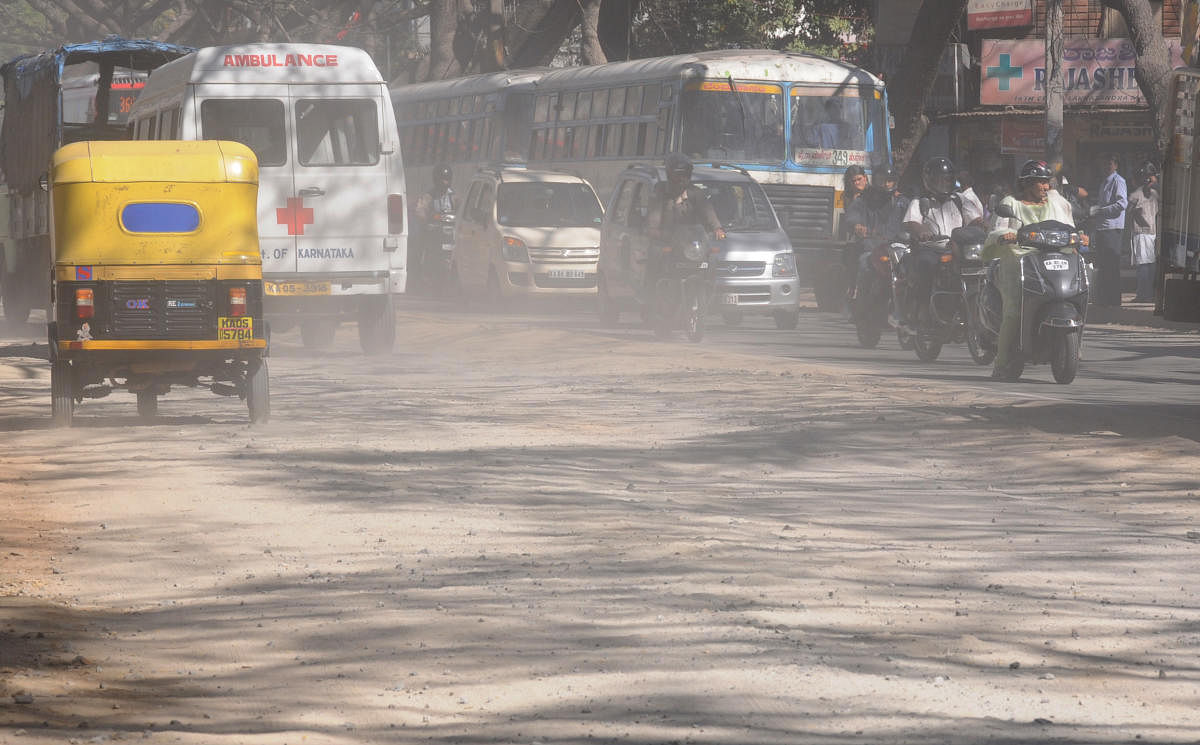
Many in Bengaluru are complaining of ailments caused by an increase in air pollution.
Pollution control officials blame the burgeoning traffic: vehicle numbers have gone up 242 per cent over the past decade. A good 72 per cent of the city’s vehicles are two-wheelers.
C Jayaram, chairman of the board, Karnataka State Pollution Control Board, says, “The presence of metal in the air has increased because of the wear and tear of the tyres on the road. The more a tyre rubs against the road, the more metal is dispersed in the air.”
The dust in the city is smeared with unburnt carbon, he explains. “Carbon is unburnt when combustion is not 100 per cent. It is released into the atmosphere and converts into what we call a viscous element, something that is slimy like grease and oil,” Jayaram says. That is the reason dust in urban areas is black, while dust in the rural areas is brown.
The untimely discharge of pollen into the air also triggers allergies. “Pollen grain gets discharged due to staggered flowering. If humans aren’t exposed to such an atmosphere for a long time, we lose the immunity and see an increase in sneezing and wheezing,” he says.
He says mass rapid transport systems like the Metro can bring down the number of vehicles on the road, and in turn, reduce air pollution. Dr T V Ramachandra of the Indian Institute of Science says the disappearing green cover is contributing to the increase in air pollution. With a spatial extent of 741 sq km, the city now has 79 per cent covered with paved surfaces (buildings, concrete footpaths, roads and so on.)
“If this trend continues, 94 per cent of the landscape by 2020 and 98.5 per cent by 2025 would be covered with paved surfaces and senseless humans,” says Ramachandra. He recommends decongesting the city by creating mini forests of native species (of 1.5 to 2 hectares) in each ward, and rejuvenation of lakes.
Dr Sanjiv Lewin, chief of medical services, St John’s Medical College Hospital, says air pollution is an environmental hazard usually measured with particulate matter (PM) as a key indicator. “The size of particulates inhaled may be coarse or fine and they are deposited in various parts of the respiratory tract… This process becomes a prerequisite for infections and a reservoir for transmission of infections to others,” he says. He sees air pollution linked to increased respiratory tract infections and also pneumonia, chronic obstructive pulmonary disease, allergies, asthma and lung cancer.
Most affected: Women and kids
Dr Sanjiv Lewin says women and children are prone to respiratory problems. Among children, the travel to and from school contributes to the risk.“There are associations with poor lung growth, decreased lung function, and even altered brain development as the child grows. The presence of lead in the air adds to multiple organ damage,” he adds.
Top pollutants in Bengaluru
- Vehicles: 42 per cent
- Road dust: 20 per cent
- Construction: 14 per cent
- Industries: 14 per cent
- Diesel generators: 7 per cent
Adverse effects of air pollution
*Wheezing, coughing, dust allergy and sleeplessness are common problems. The long-term effects include bronchitis, asthma, weakness, stamina loss, and skin irritation.